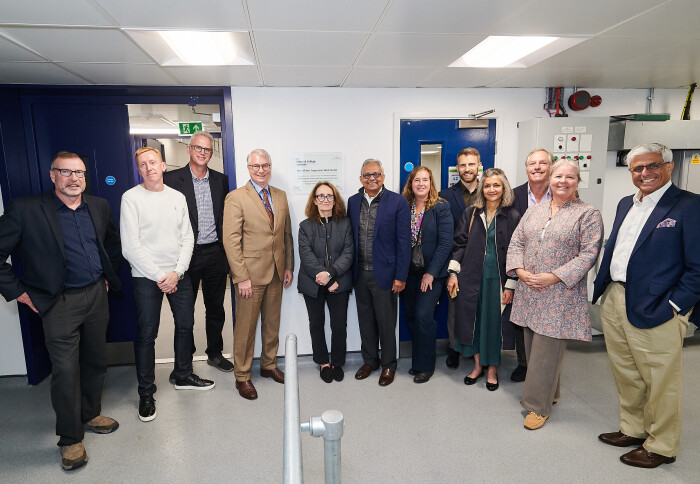

The new Hiru N Patel Supersonic Wind Tunnel has opened to allow for studies of airflow at speeds of up to five times the speed of sound.
Imperial College London’s Department of Aeronautics has opened its new Hiru N Patel Supersonic Wind Tunnel for high-speed airflow, that will allow students and researchers to carry out fundamental and applied studies of airflow at speeds in the transonic (close to the speed of sound) and supersonic (greater than the speed of sound) ranges.
The wind tunnel is unique to Europe, with variable settings that allow for simulation of real-life flight conditions including supersonic speed, heat and low pressure. Research conducted in the tunnel will have applications in fields such as military and civilian aircraft design. The tunnel can also replicate the atmospheric conditions on Mars for research into Martian/space vehicles.
"My father’s love for Imperial was so strong that honouring his memory with this project would have meant a lot to him. He would have been thrilled to be a part of new scientific discoveries in this wind tunnel going forward." - Sanjay Patel
The facility is supported by a $250,000 donation from Sanjay and Leslie Patel, in honour of Mr Patel’s late father and Imperial alumnus Dr Hiralal Patel (1919-2021). Mr and Mrs Patel, together with family and friends, joined members of the Imperial team for the launch.
Dr Paul Bruce, Reader in High-Speed Aerodynamics, who led the design and development of the wind tunnel, said: “We are so grateful for the incredible generosity of the Patels, that has made this exciting new facility a reality. The tunnel will allow us to tackle emerging challenges in the field of high-speed aerodynamics and will inspire students and researchers at Imperial for decades to come.”
Dr Hiralal Patel was a highly respected and celebrated member of the Imperial alumni community. Hiralal joined Imperial in the late 1930s for an undergraduate degree in Mechanical Engineering and later completed a PhD in Aeronautics.

Dr Patel’s thesis focused on understanding ‘flutter’ - the unstable oscillation that occurs on surfaces like the wings of an aircraft during flight. The tunnel’s capabilities, in accurate modelling of ‘flutter’, will enable continued study of the work Dr Patel was so passionate about.
The new Hiru N Patel Supersonic Wind Tunnel will complement Imperial’s 8 other active wind tunnels, and will join the Department’s flagship 10x5 low-speed tunnel as a National Wind Tunnel Facility asset. This will, uniquely, allow for collaboration with other research establishments and industry.
Article text (excluding photos or graphics) © Imperial College London.
Photos and graphics subject to third party copyright used with permission or © Imperial College London.
Reporter

Ayesha Khan
Department of Aeronautics

Contact details
Email: press.office@imperial.ac.uk
Show all stories by this author














